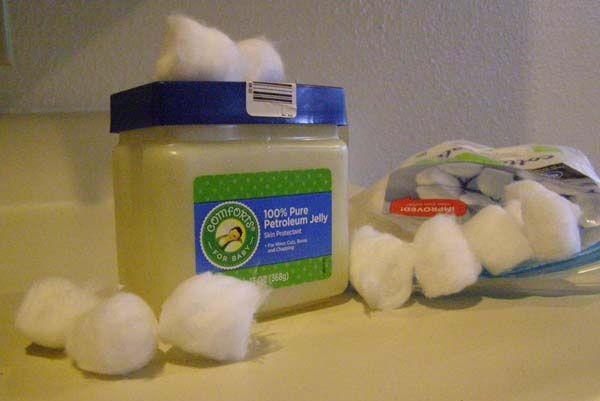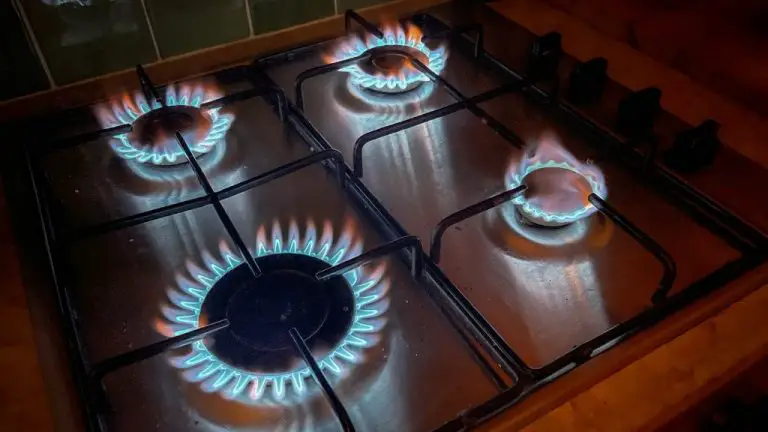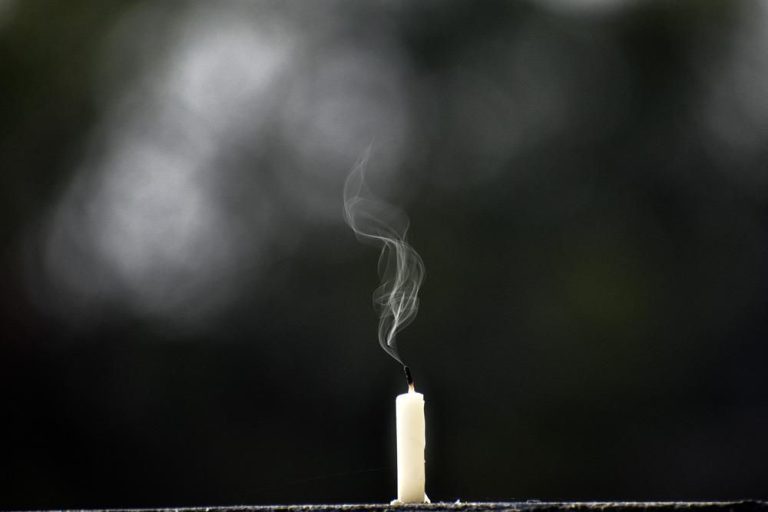What Works As Good Fire Starter?
Fire starters are materials that help ignite and sustain a flame when trying to build a fire from scratch. They are crucial for getting a fire going because they act as the initial source of heat and fire that then spreads to ignite the tinder and fuel wood. Without effective fire starters, it can be very difficult or impossible to light a fire, especially in wet conditions or with damp wood.
Good fire starters are able to combust and produce a hot flame even with a small spark or ember as an ignition source. The best materials are very dry, finely divided, and flammable. Common types of natural and commercial fire starters include cotton balls, petroleum jelly, wax, dryer lint, fatwood, and specialty products like Trioxane bars.
This article provides an overview of different materials that work well as fire starters. It covers their key properties and advantages, proper preparation methods, and tips for effective use when starting a campfire or survival fire from scratch.
Dry Tinder
Dry tinder refers to tiny dry materials that ignite quickly and easily, providing the initial source of flame in a fire. Having good dry tinder is crucial for successfully starting a fire, especially with primitive methods like flint and steel or friction fire. Dry tinder catches the first spark and allows it to grown into a self-sustaining flame that can then spread to larger fuel sources.
Good natural sources of dry tinder include fine, fluffy materials like shreds of tree bark, dried grasses, bird down feathers, cottony seed pods and tufts, and finely split dry sticks. The best tinder materials are extremely dry, fibrous, and low density so they readily accept a spark. Avoid materials like wet leaves or pine needles that won’t readily ignite. Look for dry standing dead wood, hanging bark fragments, or plant fluff carried on the wind and accumulated in piles on the forest floor. Prepare tinder by further splitting, shredding or teasing it apart to maximize surface area. Having a large supply of fine, dry tinder on hand before attempting to start a fire is an essential element of success.
Sources:
https://www.amazon.com/Dry-tinder/s?k=Dry+tinder
Cotton Balls
Cotton balls make excellent fire starters, especially when treated with a petroleum product like vaseline or wax. Untreated cotton balls contain fine, fluffy fibers that easily catch sparks (Using Petroleum Jelly Cotton Balls as a Fire Starter). The ribbons of cellulose that make up cotton fibers are ideal tinder. When a spark lands on a cotton ball, the ribbons quickly ignite and allow oxygen to flow through the fluffy mass. This provides the initial heat needed to start a fire.
Treating cotton balls with petroleum jelly, paraffin wax, or similar products makes them even better fire starters. The petroleum product helps the cotton fibers burn longer and hotter by providing additional fuel. Simply apply a generous amount of vaseline, wax, or other petroleum product to the cotton ball and store in a watertight container (How to Make a Cotton Ball Fire Starter). The oil soaks into the cotton fibers and allows the fire starter to burn for several minutes when ignited with a spark. The petroleum jelly also helps the cotton ball resist water. Treated cotton balls are inexpensive, lightweight fire starters perfect for camping, survival kits, and emergency preparations.

Wax and Petroleum Products
Wax and petroleum products like petroleum jelly and paraffin wax can make excellent fire starters. These waxy substances are hydrophobic, meaning they repel water. This allows them to burn long enough to ignite kindling even in damp conditions.
A classic DIY fire starter is to soak cardboard or cotton balls in melted wax. The wax helps the tinder burn hotter and longer. You can also make tinder “quilts” by coating dryer lint or cotton balls in a layer of petroleum jelly. The jelly helps the tinder resist moisture and burn slowly.
Wax and petroleum fire starters are a good choice for camping and emergency kits because they are lightweight and compact. They also have a long shelf life if stored properly. Just a small amount of wax or petroleum jelly can help sustain a flame long enough to get a fire going. Some commercial fire starter products like UCO Stormproof Match Kit utilize wax coating for the same effect.
When using wax or petroleum fire starters, it’s best to have plenty of dry kindling ready so the flame has fuel to spread once the starter burns out. With the right preparation, these inexpensive and simple to make starters can give you the ability to start a fire even in poor conditions.
Source: https://www.candlescience.com/learning/how-to-make-wax-fire-starters/
Steel Wool
Steel wool works very effectively as a fire starter because of its fine, fluffy strands that ignite easily with just a spark. The strands provide a lot of surface area for the spark to catch. According to Practical Survivor, steel wool only requires a very small spark to ignite because the wool fibers burn so readily. It’s important to only use very fine 000 grade steel wool. The finer the strands, the more flammable the steel wool will be.
Coarser grades of steel wool like #1 or #2 are too thick and dense to ignite as easily. As instructables outlines, the super fine 000 grade steel wool is loosely packed and has lots of oxygen pockets between the strands, making ignition easy with just a small spark or ember.Instructables recommends 000 grade for emergency fire starting situations.
Dryer Lint
Dryer lint is one of the easiest and most abundant fire starters to make use of. Lint is comprised of tiny fibers from your clothing that collect in the lint trap of your dryer. Since it’s made of things like cotton, wool, and other natural fabrics, it burns quickly and easily. Dryer lint is free and readily available in most homes, making it a convenient starter (Dryer Lint Fire Starter).
When balled up or packed tightly, dryer lint can burn for several minutes – more than long enough to ignite kindling or larger fuel sources. Dryer lint provides a flame fast, even when damp, which is very helpful in emergency situations. One note of caution is that lint derived from synthetic fibers such as polyester may not burn as well.
Fatwood
Fatwood, also known as lighter wood, lighter knot, heart pine, and pine knots, refers to pine wood that is highly resinous. The high resin content is a result of traumatic resinosis, where resin saturation occurs in response to injury or infection of the tree. This often happens in the stump or roots of pine trees after logging. The resin makes the wood burn hotter and longer than normal wood.
Fatwood is prized as an excellent natural fire starter due to its high flammability. The resin acts as a built-in kindling that ignites quickly and burns intensely. Just a few small shavings or chips of fatwood can help start a campfire, fireplace, or charcoal grill. The resin content can be over 50% in some fatwood, making it easy to ignite even when wet.
Fatwood is commonly harvested from stumps and roots of dead pine trees, particularly in pine forests managed for timber. However, over-harvesting fatwood can be detrimental to ecosystems. An alternative is to purchase ethically-sourced fatwood from specialty stores. Artisan fatwood is also available, with beautiful grain patterns due to the dense resin.
When using fatwood for starting fires, it’s best to prepare thin, dry shavings or chips. Avoid large chunks, which tend to smother the flames. The key is exposing maximum surface area of the resin to oxygen to ignite easily. With proper preparation and use, fatwood is an excellent and reliable fire starter for campers, survivalists, and backyard fire pits.
Commercial Fire Starters
Commercial fire starters offer a convenient and reliable way to start a campfire or backyard fire pit. There are several options on the market including fire starter sticks, tablets, and flints. Fire starter sticks are long matches that have wax or petroleum jelly coating the tips to help ignite tinder quickly. Some sticks also have magnesium mixed into the coating to add spark power. Tablets are small compressed sawdust discs infused with wax or petroleum that light easily with a match or spark. Flints are pieces of very hard rock that produce sparks when struck against steel. Here’s an overview of the main pros and cons of each type of commercial fire starter:
Fire Starter Sticks
Pros: Easy to light and hold; extended burn time; work even when wet
Cons: Limited quantity; can be bulky to carry
Fire Starter Tablets
Pros: Compact and lightweight; fast and reliable; inexpensive
Cons: Short burn time; need tinder to catch flame
Flint and Steel
Pros: Very reliable; reusable flint; generates strong sparks
Cons: Requires technique; sparks may burn skin; need very dry tinder
Overall, each type of commercial fire starter has advantages and drawbacks depending on the situation. Fire starter sticks work great for camping trips while tablets are ideal for emergency kits. Flint and steel takes practice but offers a primitive yet effective fire starting method. Consider your needs, conditions, and skills when choosing a commercial fire starter.
Tips for Use
When using fire starters, preparation is key for ignition. Make sure your tinder and kindling are bone dry before attempting to start your fire. Some fire starters like steel wool require fluffing up before use so there is more surface area to catch a spark (Source).
Exercise caution with petroleum-based starters like lighter fluid. Use only the recommended amount, and never add more fluid to an existing fire as flashbacks can occur. Store all flammable fire starters safely away from open flames (Source).
Consider weather conditions carefully when using fire starters outdoors. Some options like lighter fluid can be ineffective in windy conditions. Opt for all-weather commercial fire starter blocks designed for camping and survival uses if rain or snow is likely.
Never leave a fire unattended, and always fully extinguish it before leaving the area. Preparedness with proper fire safety knowledge and equipment like buckets, shovels, or a fire extinguisher is essential when utilizing fire starters.
Conclusion
In summary, some of the best all-around fire starter options include cotton balls combined with petroleum jelly, dryer lint, commercial fire starter cubes, and products like BlastMatch and FireFlame. Having quality fire starters on hand is crucial for emergency preparedness. In a survival situation, being able to start a fire quickly and reliably with limited resources could mean the difference between life and death. Fire provides heat, light, ability to purify water, cook food, and signal for help. Investing in waterproof, long-burning commercial fire starters and storing back-ups like dryer lint or homemade starters is wise for anyone focused on disaster preparedness or frequent camping/hiking. With the right materials, even wet wood can be lit in adverse weather. This guide reviewed key characteristics to look for and tested products so you can find fire starters that meet your specific needs.


